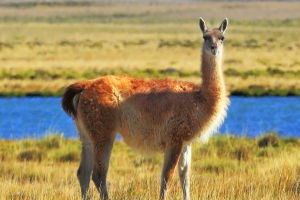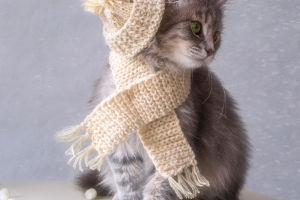In the West, a fascinating saying is, "A dog is a man's best friend. A cat is a cat's best friend." Compared to dogs, cats always leave a mysterious impression.
They can be tender and sweet one moment and aloof and distant the next. While they gaze at you quietly, you must also beware of whether they might scratch you.
"Aloof Cats Who Aren't Familiar"
A recent study on genetics suggests that the domestication history of cats can be traced back to nearly ten thousand years ago, likely triggered by changes in human lifestyle.
Around 5,000 to 10,000 years ago in the Middle East, the first cat species, the African wildcat, wandered into human settlements, initiating the domestication process of cats.
Ancient Egyptians realized that cats could protect stored food from rodents, preventing them from being eaten. Egyptians began feeding cats leftover food like fish heads to encourage them to visit settlements regularly. Cats entered people's lives through this harmonious symbiotic relationship, gradually becoming domesticated.
Consequently, these friendly wildcat species started entering human households and reproducing there. The responsible cats that frequently ventured outside were the ancestors of modern cats.
Why Cats Are "Unfamiliar" with Us
Firstly, before answering this question, we must define domestication.
Domestication refers to the process where the growth and reproduction of one species gradually become controlled and utilized by another species.
For humans, domestication marks a significant advancement. Domesticating wheat, livestock, and other species allowed humans to live more comfortably, pushing civilization forward.
So why are cats "unfamiliar" with us? There are two main reasons:
1. Loose "Relationship"
Domestication is a gradual process rather than an abrupt event. It involves two main stages: humans capturing and raising animals, then consciously controlling domesticated animals' reproduction.
In this process, humans hold the dominant position, selecting traits that they find desirable in animals. These deliberate selections lead to increasingly intimate relationships between humans and these animals, with the domesticated animals gradually becoming accustomed to human care and losing their wild instincts.
However, this situation is different for cats. In past research, scientists believed that the encounter between humans and cats probably originated from cats catching mice. Humans are social animals who need to accumulate food, so as mouse populations grew, cats became more attractive to humans. Thus, the destined encounter between the two species occurred.
Cats wouldn't significantly impact agriculture and could catch mice, which was beneficial for humans. With their adorable appearance, humans had almost no restrictions on this species, and cats naturally entered the human world. (Although they entered the human world, they remained pretty independent).
This relatively loose connection between cats and humans means that there are not many traces of artificial selection in the genes of domestic cats. Simply put, cats remain much as they were before.
2. Short Domestication Time
Furthermore, compared to dogs (approximately 30,000 years), cats have been domesticated for a relatively short time.
It was only in the past two hundred years that humans began seriously considering the domestication of cats. To give some perspective, most modern cat breeds were developed in the 19th century in the British Isles.
Therefore, to make cats similar to dogs, a significant amount of time needs to be spent on artificial breeding and nurturing.


